- Books Name
- CBSE Class 6 Mathematics Book
- Publication
- Param Publication
- Course
- CBSE Class 6
- Subject
- Mathmatics
Factors
Any number which is an exact divisor of a given number is called a factor of the given number.
For example factor of 6 are 1,2,3 and 6
Important results :
(a) 1 is a factor of every number.
(b) Every number is a factor of itself.
(c) Every factor of a number is always equal to or less than the number.
(d) Every number has a finite number of factors.
- Books Name
- Class 6 Mathematics Book
- Publication
- ReginaTagebücher
- Course
- CBSE Class 6
- Subject
- Mathmatics
CHAPTER - 03
PLAYING WITH NUMBERS
Prime and Composite Numbers
A Prime number is a number which has exactly two factors i.e. ‘1’ and the number itself. A composite number has more than two factors, which means piecemeal from getting divided by 1 and the number itself, it can also be divided by at least one positive integer. 1 isn't a prime or composite number. Except these two numbers, there's also same order of numbers which are co prime numbers.
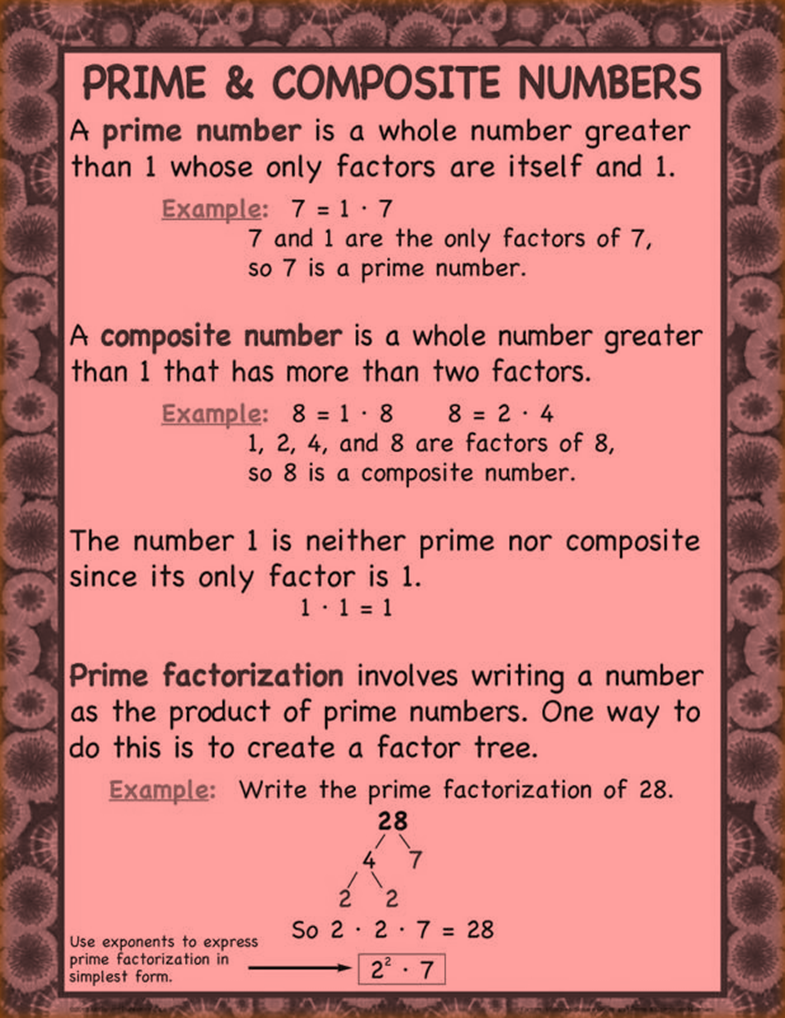
Detailed explanations of these numbers are given below.
Prime Numbers
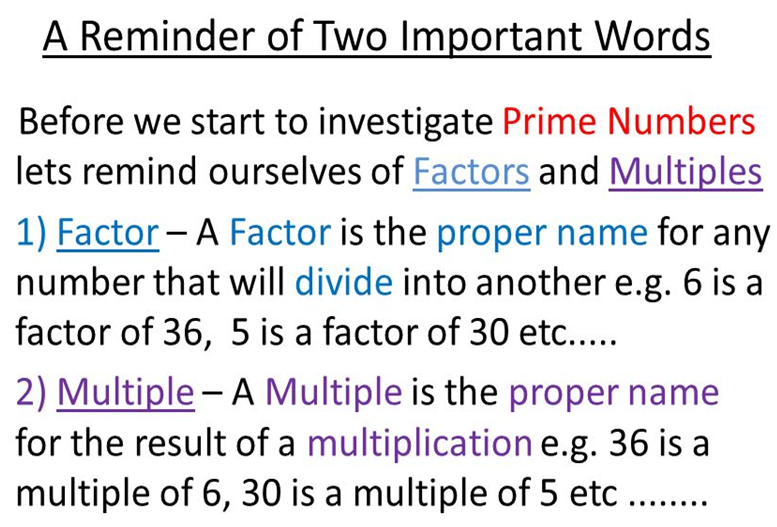
Illustration of Prime Number
3 is a prime number because 3 can be divided by only two numbers
i.e. 1 and 3 itself.
3/1 = 3
3/3 = 1
in the same way, 2, 5, 7, 11, 13, 17 are prime numbers.
Composite Numbers
A composite number has more than two factors, which means aside from getting divided by the number 1 and itself, it can also be divided by at least one integer or number. We don't consider ‘1’ as a composite number.
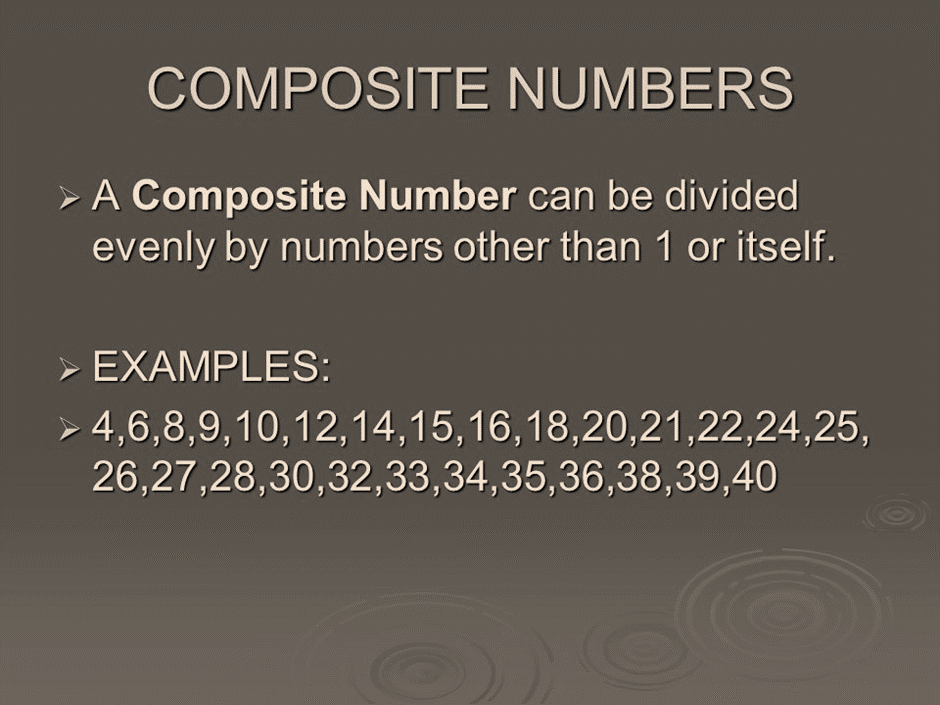
Illustration of Composite Number
12 is a composite number because it can be divided by 1, 2, 3, 4, 6 and 12. So, the number ‘12’ has 6 factors.
•12/1 = 12
•12/2 = 6
•12/3 = 4
•12/4 = 3
•12/6 = 2
•12/12 = 1
Types of composite Numbers
There are two types of composite Numbers
1. Even composite Numbers
2. Odd composite Numbers
Odd Composite Numbers
The odd positive integers or the odd Numbers that aren't prime Numbers are called odd composite Numbers. For illustration, 9, 21, 33, 45, etc., are odd composite Numbers.
Even Composite Numbers
The even Numbers that aren't prime Numbers are called even composite Numbers. For illustration, 4, 10, 16, 28, 56, etc., are even composite Numbers.
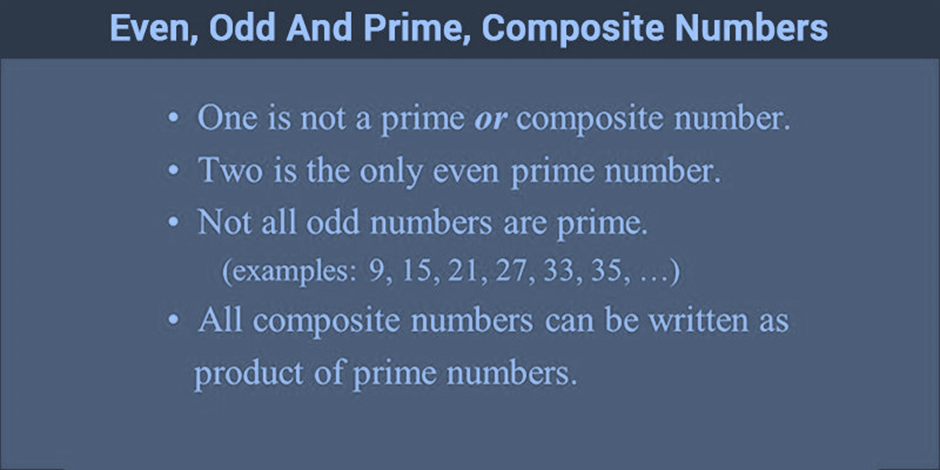
Sieve of Eratosthenes is a system to find the prime Numbers and composite Numbers from the group of Numbers. A Greek Mathematician Eratosthenes, in the third century B.C introduced this.
The Sieve of Eratosthenes system is easy to find the prime Numbers from a set of Numbers.
The way to find the prime Numbers
from 1 to 100 are as follows
Step 1 First write all the natural Numbers from 1 to 100,row-wise and column-wise as shown in the below figure.
Step 2 put a cross over 1, as it's neither a prime number nor a composite.
Step 3 Now, encircle the number 2(which is a prime number) and cross all the multiples of 2, similar as, and so on. Since all the multiples of 2 are composite.
Step 4 next, encircle the number 3, and put a cross over all the multiples of 3, similar as, etc. Since piecemeal from 3 all its multiples are composite.
Step 5 makes circle the number 5 and put a cross over all the multiples of 5.
Step 6 Now encircle 7 and cross all the multiples of 7
Step 7 Encircle 11 and cross all the multiples of 11
Step 8 Continue the process unless all the Numbers are moreover encircled or crossed.
Composite number is a number with any set of Numbers that don't have any other common factor other than 1. It's also known as fairly prime Numbers.
Properties of co-prime Numbers
• All prime Numbers are co-prime to each other.
• Any successive whole Numbers are always co-primed.
• Sum of any two co-prime Numbers is always co-primed.
•Co-prime Numbers need not be prime Numbers.
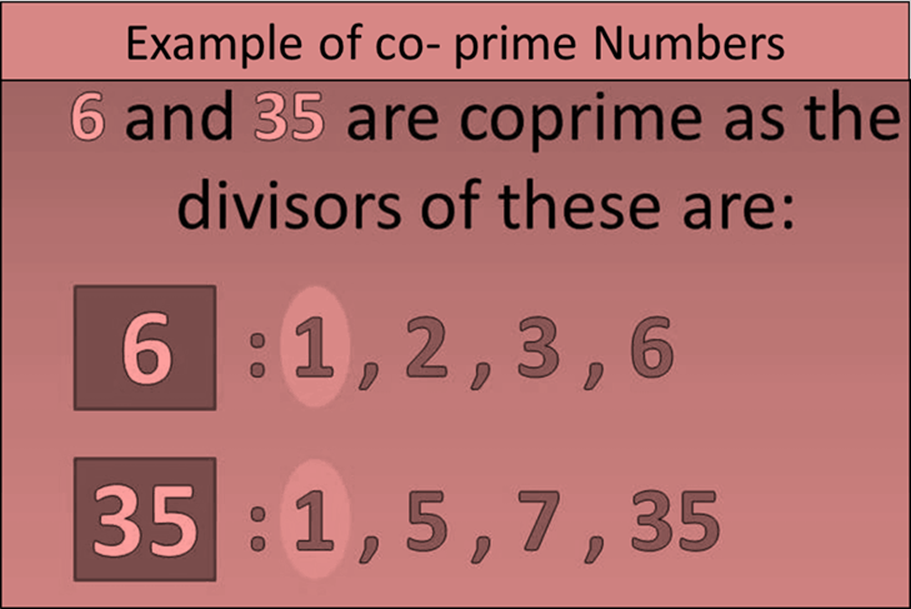
Twin prime are a match of prime numbers that differ by 2.
3.1 Factors and Multiples
The numbers that can be divided completely by another number is known as factor.
When a number is multiplied by a natural number then the number we get in result is called Multiple of that Number.
E.g. 18 is a multiple of 1,2,3,6,9,18 and
∴ 2,5 and 10 are the factors of 10.
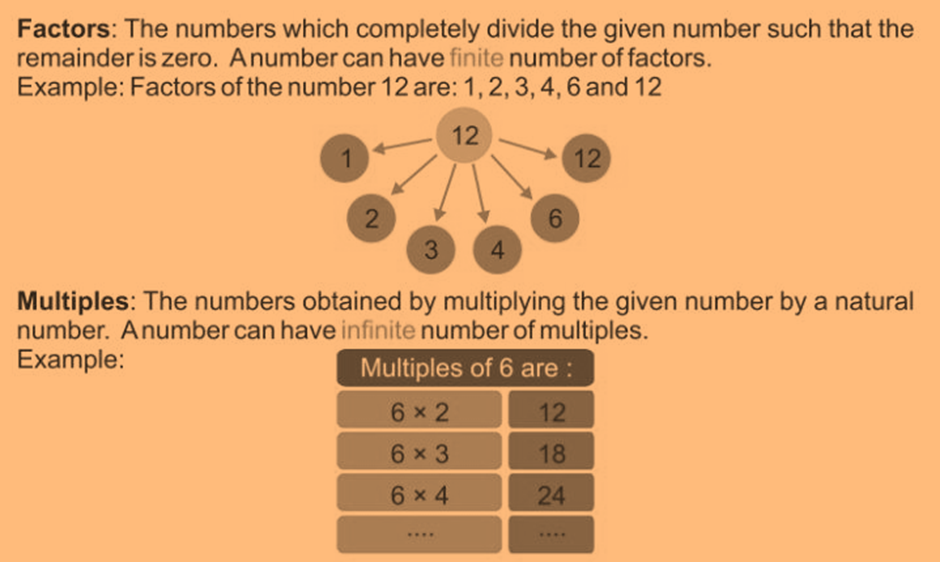

 Param Publication
Param Publication
 ReginaTagebücher
ReginaTagebücher
